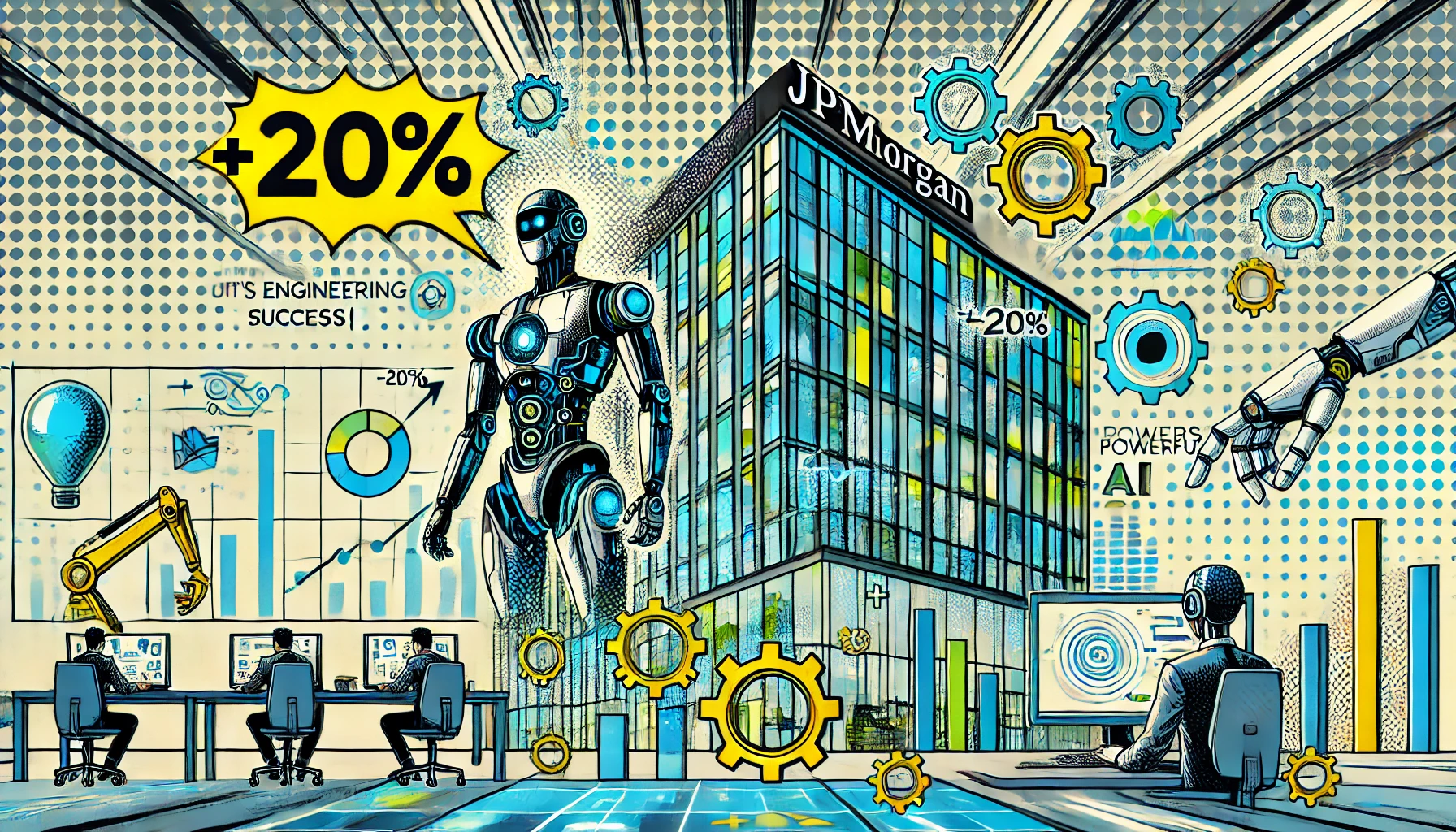
JPMorgan Boosts Engineering Productivity by Up to 20% with AI Coding Assistant
Artificial Intelligence (AI) is once again proving its power to make work faster and smarter. At JPMorgan Chase, one of the world’s largest banks, engineers have seen their productivity jump by 10% to 20%, thanks to a new AI coding assistant. The tool, developed by JPMorgan’s own tech team, helps software engineers complete their coding tasks quicker and more accurately.
This advancement means that JPMorgan can now assign more engineers to work on big, important projects that create real value for the company. Lori Beer, JPMorgan’s Global Chief Information Officer, said this new AI tool is creating “a great opportunity” for the company to be even more efficient. With 63,000 tech workers around the globe and a $17 billion technology budget for 2024, JPMorgan is leading the way in showing how AI can transform a big business.
Over the past few years, AI has gone from being an experimental idea to an important tool in businesses around the world. In the tech world, especially in software development, engineers often spend a lot of time writing code, fixing bugs, and testing programs. This work can be very repetitive and time-consuming.
That’s where AI coding assistants come in. They are smart programs trained to help engineers by suggesting code, finding mistakes, or even writing chunks of software automatically. JPMorgan decided to build its own AI tool instead of buying one from a tech company. The result is a system that fits their needs exactly and helps speed up the software development process. This move is part of JPMorgan’s bigger plan to use AI across the company—not just to automate tasks, but also to innovate and stay ahead in a fast-changing financial world.
Key Facts & Details
Efficiency Boost of 10% to 20% JPMorgan engineers who use the AI coding assistant are getting their work done 10% to 20% faster. That’s a big improvement in a company where even a few minutes saved per project can add up to millions of dollars over time. Lori Beer explained that with engineers finishing coding tasks more quickly, JPMorgan can now reassign them to work on more strategic, high-value projects that directly help the business grow.
A Giant Tech Team JPMorgan’s technology workforce includes 63,000 employees. About 21,000 of them work in India, making up roughly one-third of the global tech team. This huge number shows how important technology and innovation are to JPMorgan’s success. Having a large tech team also means that improving efficiency, even by a small percentage, can have a huge financial impact.
$17 Billion Technology Budget For 2024 alone, JPMorgan has set aside a massive $17 billion to spend on technology. A big part of this money is going toward AI and data-driven initiatives. That’s not just for making work faster—it’s about creating smarter systems that can help the bank serve customers better, make better decisions, and stay ahead of competitors.
Hundreds of AI Use Cases JPMorgan has already found 450 ways to use AI in its business operations and expects to find up to 1,000 use cases by next year. This shows that the company isn’t just experimenting—it’s fully committed to making AI a core part of how it works. From helping customers manage their money to predicting financial trends, AI is becoming part of almost everything JPMorgan does.
Building Value, Not Just Saving Time Lori Beer pointed out that success with AI isn’t just about being faster or cheaper. It’s about real transformation. “Success is if we continue to articulate that it’s not just an incremental shift with AI, but we’re transforming and creating value,” she said. In other words, AI at JPMorgan is about rethinking how work is done, not just doing the same old tasks quicker.
Analysis & Impact
Impact on Technology and Business JPMorgan’s use of AI coding assistants shows how big companies are moving into the next phase of the AI revolution. Instead of using AI for small tasks or experiments, they are making it a critical tool to boost productivity, drive innovation, and stay competitive. If this model works well, we can expect other banks, tech firms, and businesses to follow JPMorgan’s lead. AI might soon become as important to office work as computers and the internet once were.
Challenges and Risks However, there are challenges too. If AI takes over more coding tasks, will there still be enough meaningful work for human engineers? There’s also a risk that relying too much on AI could lead to mistakes if the AI isn’t carefully supervised. Plus, training and retraining workers to work alongside AI systems is no small task. JPMorgan’s leaders seem aware of these risks and are trying to manage them by focusing on areas where AI creates real value rather than just replacing people.
Resources & References
- Reuters: JPMorgan AI Coding Efficiency Report
- JPMorgan Technology and AI Strategy Briefs
- Financial Times: JPMorgan AI Investments Overview
JPMorgan Chase is showing the world that AI isn’t just a tech trend—it’s a powerful tool that can help real businesses work smarter and grow faster. By using an in-house AI coding assistant, the bank has boosted engineering efficiency by up to 20%, allowing its tech teams to focus on more important projects that create real value.
As AI becomes a bigger part of everyday business, it raises important questions: How will workers adapt? How can companies make sure AI is used responsibly? And how can businesses use AI to create opportunities instead of just cutting costs?
What do you think? Should more companies invest in building their own AI tools like JPMorgan? How can businesses use AI wisely to help people, not just replace them? Share your thoughts below and stay tuned for more updates on how AI is transforming the future!


